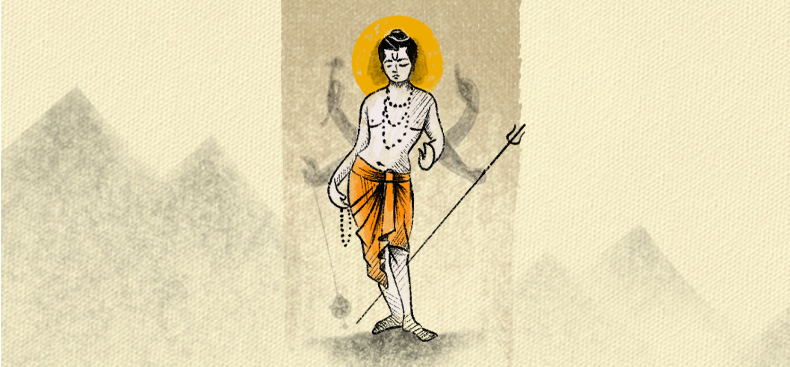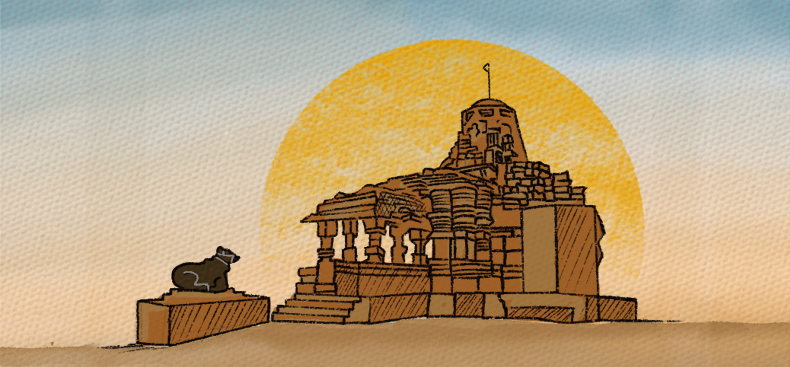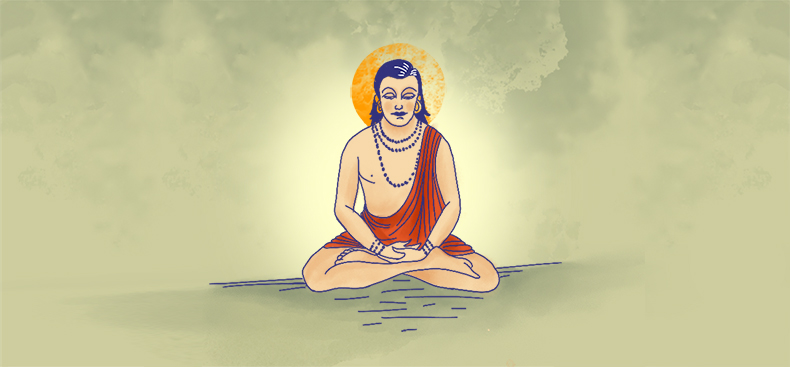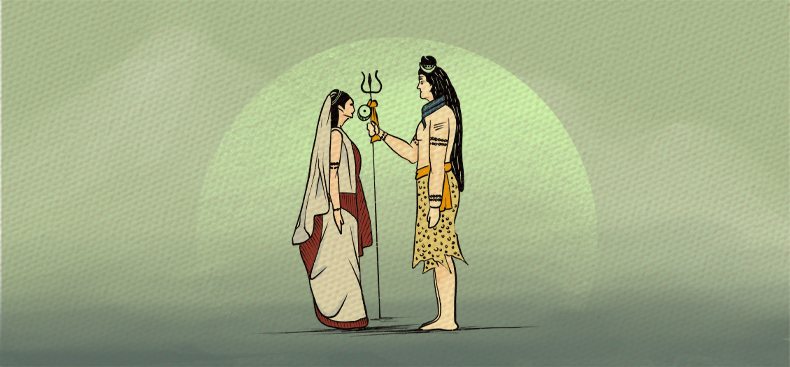Therefore, despite the antiquity of yoga, emerging as it did from the Vedic asceticism of tapas and meditative absorption, its postural variety may be a more recent development. Yogic practices of physical postures emerge in our archaeological and literary records from the 10th-11th centuries onwards. There are surviving 12th and 13th century temples in Maharashtra and Gujarat that show carvings of Nātha yogis in various yoga poses and states of meditation.1Vijay Sarde, “‘Yoga on Stone’: Sculptural Representation of Yoga on Mahuḍī Gate at Dabhoī in Gujarāt,” Heritage: Journal of Multidisciplinary Studies in Archaeology 5 (2017).
The Vaiṣṇava and Śaiva literary records of that time describe certain yogic postures and advanced prāṇayāma techniques. It may be that these postures and yogic techniques are very old but had not been recorded till that time—we do not have data to either prove or disprove it. However, we can be very sure that by the 12th century postural yoga (āsana, mudrās and bandhās) techniques had become very popular, at least among the Nātha yogis in the Western and Deccan regions of India.
Nātha yogis such as Matsyendranātha and his disciple Gorakṣanātha are usually credited as the founders of Haṭha yoga. They were yogis from the tantric tradition adept in controlling and channelling their vital energies through the movement of Kuṇḍalinī within the psychic channels of their body. These techniques, when combined with a more physical form of yoga and breath control, are called Haṭha yoga, a system of yoga that was canonised in the famous 15th century Nātha text, Haṭhayogapradīpikā.
One of the earliest texts to use the term Haṭha yoga, as we understand it today, and to elaborate its principles, is a 13thcentury Vaiṣṇava text called the Dattātreya-yogaśāstra. It is an important work because it makes certain conceptual breakthroughs by dividing various competing forms of yoga into a neat hierarchical scheme that aids understanding—at least for a person from the 21st century. In this text, Haṭha yoga and some of its very early practices finally emerge fully into our literary records. What follows is an overview of some of the most important parts of the work.
Dattātreya-yogaśāstra teaches four kinds of yogic path: mantra yoga (yoga of mantra), laya yoga (yoga of dissolution), Haṭha yoga (yoga of force), and rāja yoga (royal yoga). Sage Dattātreya says that rāja yoga is the best of these four kinds. Then he goes on to define these yogic paths:
Mantra yoga: In this method, the yogic aspirant does Japa (recitation) of a given mantra after the application of Mātrakas on the body parts.2Dattātreyayogaśāstram, ed. Manmath Gharote; Parimal Devnath (Lonavala: Lonavala Yoga Institute 2015), 9. If one does this regularly for twelve years, he attains knowledge (jñana) and siddhis (extraordinary powers). However, ṛṣi Dattātreya says that this is an inferior method and only applicable to mediocre practitioners.
Laya yoga: This involves the absorption or dissolution of the mind (citta) by means of an esoteric technique (saṃketa). Sage Dattātreya says that these techniques were revealed by Lord Śiva, the Ādinatha, to certain yogis. These techniques include constant contemplation on the sunya (void), fixing the gaze at the tip of the nose, fixing the gaze at the center of the eyebrows, lying down while keeping the body in a corpse pose, and others. Through practice of these techniques, the mind dissolves. This is called Laya yoga.
Haṭha yoga: Sage Dattātreya classifies Haṭha yoga into two categories. First, the eight auxiliaries of the famous Patañjali’s Yogasūtra – Yama, Niyama, Āsana, Prāṇayāma, Pratyāhāra, Dhyāna, Dhāraṇa, and Samādhi. This, surprisingly, he calls the yoga of Yājñavalkya, the great Upaniṣadic sage. He calls the second category the yoga of the siddhas, such as Kapila Muni (who in Mahābhārata is called the avatāra of Lord Viṣṇu). There are nine Haṭha techniques practised by the siddhas: mahāmudra, mahābandha, khecarī, jālandhara bandha, uḍḍiyāna, mūlābandha, viprītakaraṇī, vajrolī, amarolī, and sahajolī. The text goes on to describe all these Haṭha Yoga techniques in brief.3One can read any standard Haṭha Yoga text from Kaivalyadham Lonavala for details on these early Haṭha techniques.
Rāja yoga: This royal yoga is described as a culmination of all the above methods of yoga. It is a stage reached by the siddhas if all the practices are done regularly under the guidance of a guru.
The text ends with a supplication to ṛṣi Dattātreya who is none other than the embodiment of Lord Viṣṇu. There are two things to notice in the text. First, the Haṭha yoga techniques mentioned in the text are very different from how it is practised today. There is no mention of any āsana practice in the sense we currently understand. The physical practices of mudrās and bandhās are employed to channel the yogic breath into certain parts of the body to attain samādhi.
Second, the text defines the goal of yoga in very Advaita Vedānta terms. This is a common feature in almost all the Haṭha yoga texts—one cannot separate Vedānta from Haṭha yoga. Ṛṣi Dattātreya says that samādhi is the state of oneness of jivātma and paramātma—this is described as jīvanmukti. The yogi merges with the brahman in that final stage, transcending all good and bad karmas. However, if the advanced yogi does not want to give up his physical existence, he can attain various siddhis such as flying, acquiring different bodies and shapes.





Leave a Reply